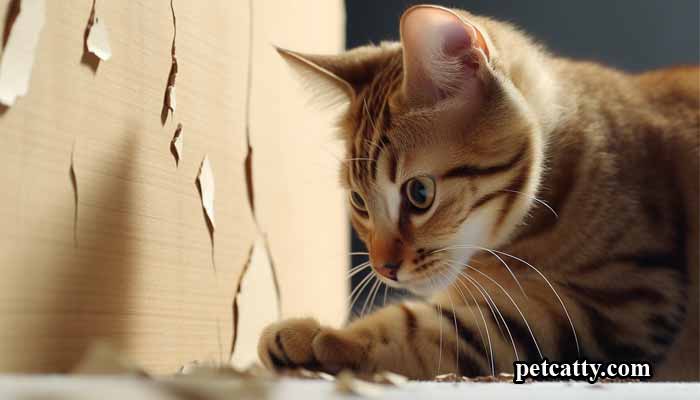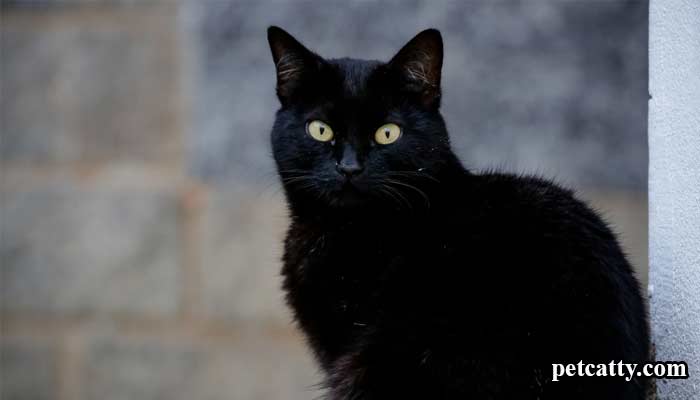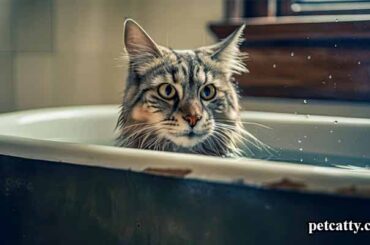Cats are mysterious creatures, and while they can bring joy and companionship to our lives, their behaviors often leave us intrigued and puzzled. One of these curious behaviors is their love for scratching cardboard. Why do cats enjoy shredding, tearing, and kneading cardboard with such fervor? In this article, we’ll delve into the world of feline instincts and preferences to unravel the mystery behind why cats like scratching cardboard.
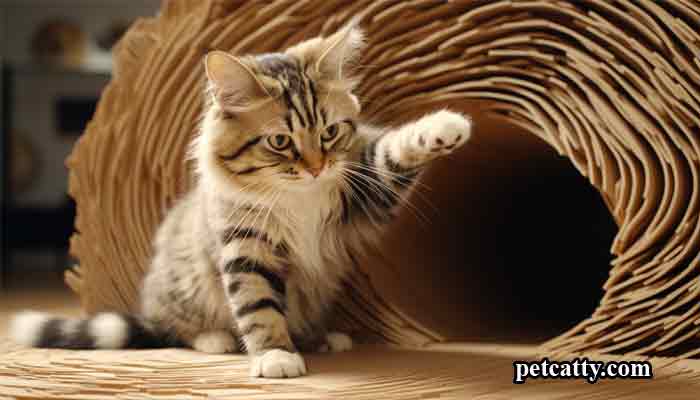
Table of Contents
- Why Do Cats Like to Scratch Things?
- Why Do Cats Like Cardboard?
- 10 Reasons Why Cats Love Cardboard Boxes
- Why Do Cats Like to Sit on Paper?
- How to Stop Cat Scratching Cardboard
- Conclusion
- Frequently Asked Questions
Why Do Cats Like to Scratch Things?
Cats have a natural instinct to scratch things for several reasons:
- Maintaining Claws: Scratching helps cats remove the outer layer of their claws, which keeps them sharp and healthy. It’s a form of grooming for their claws.
- Stretching Muscles: When a cat scratches, it stretches its body, including its back and shoulder muscles. This helps to keep them limber and in good physical shape.
- Marking Territory: Cats have scent glands in their paws, and when they scratch, they leave behind both a visual mark (the scratches) and a scent mark. This marks their territory and communicates their presence to other cats.
- Relief Stress: Scratching can be a way for cats to relieve stress or frustration. It’s a natural behavior that helps them cope with various emotions.
- Maintaining Balance: Scratching can also help cats maintain balance and coordination. By stretching and extending their limbs, they are helping to keep their muscles and joints in good working order.
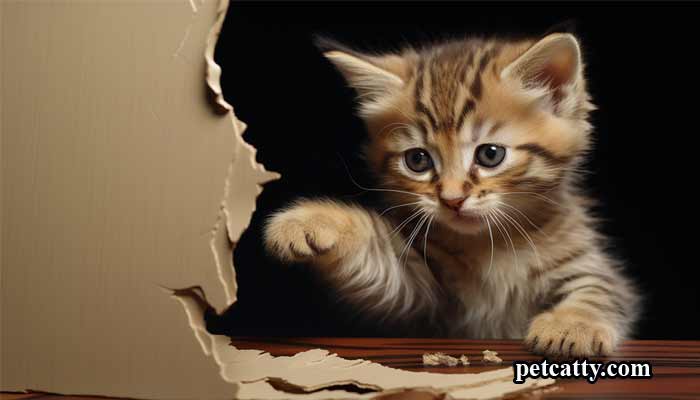
Why Do Cats Like Cardboard?
Cats are often attracted to cardboard for a few reasons:
- Texture: Cardboard has a unique texture that many cats find appealing. It’s rough and allows them to dig their claws into it, which feels satisfying for them. This can help with claw maintenance, as it provides a way for cats to sharpen their claws.
- Scent Retention: Cardboard can absorb and retain scents. Cats have a keen sense of smell, and they may be drawn to cardboard because it holds the scent of their environment, which is comforting to them.
- Warmth and Insulation: Cardboard can also provide a warm and insulated surface for cats to rest on. The material can trap and hold heat, making it a cozy spot for a cat to curl up on.
- Hiding and Play: Many cats enjoy the playfulness of cardboard. It can serve as a hiding spot or a hunting ground for them. They may pounce on or claw at cardboard boxes or playfully dart in and out of them.
- Environmental Enrichment: Cardboard can provide environmental enrichment for cats. It gives them something to explore, scratch, and interact with, which can help alleviate boredom and provide mental stimulation.
Because cats are naturally drawn to cardboard, you might find that they enjoy cardboard boxes, scratching posts made of cardboard, or simply cardboard pieces left on the floor. Providing them with cardboard toys or boxes can be a cost-effective way to keep your cat entertained and engaged. Just be sure to supervise your cat’s interactions with cardboard to ensure their safety and to prevent them from ingesting any small pieces.
To prevent your cat from scratching furniture or other unwanted areas, it’s a good idea to provide them with appropriate scratching posts or pads. These should be placed strategically around your home, and you can encourage your cat to use them by sprinkling some catnip on them or using positive reinforcement when they use the designated scratching areas. Trimming your cat’s claws regularly can also help reduce the damage caused by scratching. It’s important to remember that scratching is a natural behavior for cats, so providing them with appropriate outlets for this behavior is essential for their well-being.
10 Reasons Why Cats Love Cardboard Boxes
Cats have a strong affinity for cardboard boxes for various reasons. Here are ten reasons why cats love cardboard boxes:
- Cozy Shelter: Cardboard boxes provide cats with a small, enclosed space that mimics a den or shelter. Cats naturally seek out secure and cozy spots to rest and feel safe.
- Warmth and Insulation: Cardboard is a good insulator, and cats are attracted to the warmth that cardboard boxes can retain. It provides a comfortable, insulated environment for them to relax in.
- Security: Boxes offer a sense of security and privacy for cats. They can observe their surroundings from a concealed vantage point, which makes them feel less vulnerable.
- Hunting and Pouncing: Cats often see cardboard boxes as prey or hiding spots. They may pounce on or play around the box, simulating hunting behavior.
- Scratching Surface: Cardboard boxes are great for scratching. Cats can sharpen their claws on the cardboard, satisfying their natural scratching instincts.
- Chewing and Gnawing: Some cats enjoy chewing or gnawing on the edges of cardboard, which can be a form of entertainment and dental exercise.
- Scent Retention: Cardboard can absorb and hold scents, making it familiar and comforting for a cat. Their scent can linger on the box, marking it as their territory.
- Exploration and Hide-and-Seek: Cats love to explore and play, and a cardboard box can become the perfect setting for a game of hide-and-seek or a new place to discover.
- Stress Reduction: Being in a confined space like a cardboard box can have a calming effect on cats, reducing stress and anxiety.
- Environmental Enrichment: Cardboard boxes provide a source of environmental enrichment for cats. They can interact with the box, jump in and out, or simply bat at it, keeping them mentally and physically engaged.
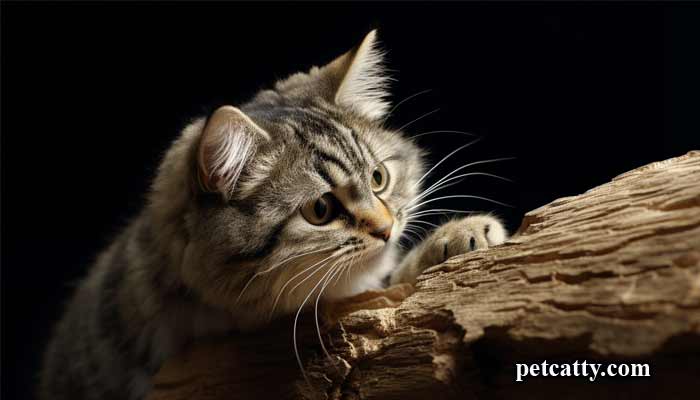
Why Do Cats Like to Sit on Paper?
Cats are often drawn to sitting on paper for several reasons:
- Texture: The texture of paper, whether it’s newspaper, wrapping paper, or a sheet of printer paper, can be appealing to cats. It’s a bit crinkly and has a different feel under their paws compared to other surfaces.
- Warmth: Paper can hold and trap heat, making it a warm and comfortable spot for a cat to rest. Cats are attracted to warm surfaces, and a piece of paper can provide a cozy place to curl up.
- Scent Absorption: Cats have a strong sense of smell, and paper can absorb and retain scents. If a cat has been on the paper before, it will carry their scent, which can be comforting to them.
- Camouflaging Instinct: Cats are natural hunters, and sitting on paper might be a way for them to hide and stalk their prey. It can offer a sense of concealment and help cats feel more secure.
- Novelty: Cats are curious animals, and anything new or different in their environment can pique their interest. A piece of paper on the floor can be an intriguing addition to explore.
- Attention-Seeking: If a cat sees that you are paying attention to or working with the paper, they may sit on it as a way to get your attention. Cats often enjoy being the center of their owner’s world.
- Play and Exploration: Cats might paw at, knead, or scratch the paper, turning it into a plaything. The rustling sound and texture make it engaging for them.
- Environmental Enrichment: Cats require mental and physical stimulation. A piece of paper on the floor can be a simple form of environmental enrichment, offering a change in their environment and an opportunity for play.
Overall, while it might seem curious that cats are so drawn to sitting on paper, their behavior can be attributed to a combination of tactile, sensory, and instinctual factors. If your cat shows a particular fondness for sitting on paper, consider providing them with safe, clean paper to enjoy, and be sure to supervise to ensure they don’t ingest or play with it in a way that could harm them.
How to Stop Cat Scratching Cardboard
If you want to discourage your cat from scratching cardboard, you can try the following strategies:
- Provide Alternatives: One of the most effective ways to prevent your cat from scratching cardboard is to provide them with appealing alternatives. Invest in a good quality cat scratching post or pad made of materials like sisal, carpet, or wood. Place these alternatives near the cardboard that your cat usually targets.
- Catnip: Use catnip to attract your cat to the scratching post or pad. Rub some catnip on the post or pad, or sprinkle it on the surface. Catnip can make the scratching post more enticing.
- Positive Reinforcement: When you catch your cat scratching the appropriate surface (the scratching post or pad), offer praise and rewards, such as treats or affection. This positive reinforcement can help your cat associate scratching the right surface with rewards.
- Deterrents: You can use deterrents to discourage your cat from scratching cardboard. Double-sided tape, aluminum foil, or commercial pet deterrent sprays can be applied to the cardboard. Cats often dislike the sticky texture or the noise these materials make when scratched.
- Protect the Cardboard: If your cat is attracted to a specific cardboard item that you want to preserve, like a box, you can cover it with double-sided tape or clear plastic wrap to deter scratching. This way, your cat will lose interest in it as a scratching target.
- Trim or Cap Claws: Regularly trim your cat’s claws or consider using soft claw caps (such as Soft Paws). These caps can prevent your cat from causing damage when they scratch and are safe for your pet.
- Supervise and Redirect: When you see your cat about to scratch cardboard, gently redirect their attention to an appropriate scratching surface. Use a toy or treats to entice them to use the scratching post instead.
- Provide Play and Exercise: Cats often scratch to expend excess energy or alleviate boredom. Engage in interactive play sessions with your cat and provide toys to keep them mentally and physically stimulated.
- Consult a Veterinarian: If your cat’s scratching behavior is sudden and excessive, it could be due to stress, anxiety, or a medical issue. In such cases, consult your veterinarian for advice and potential solutions.
Remember that patience and consistency are key when trying to change your cat’s scratching behavior. It may take some time, but with these strategies, you can help redirect your cat’s scratching instincts to more appropriate surfaces.
Conclusion
Understanding why cats like scratching cardboard and related behaviors is the key to responsible pet ownership. By providing your cat with suitable alternatives and creating an enriching environment, you can meet their natural needs while keeping your home intact. Cardboard can be both a source of fun for your feline friend and a potential point of frustration for you. The secret lies in striking a balance that benefits both you and your beloved cat.
Frequently Asked Questions
Are cardboard scratchers good for cats?
Yes, cardboard scratchers are good for cats. They provide an outlet for scratching, exercise, and mental stimulation.
Why do cats love cardboard so much?
Cats love cardboard due to its texture, warmth, scent retention, and playfulness it offers.
Why do cats like sleeping on cardboard scratchers?
Cats may sleep on cardboard scratchers because they find them cozy and warm, and the scent of the cardboard is comforting.
What is the best material for cats to scratch?
The best materials for cats to scratch are sisal, carpet, and cardboard. They offer satisfying textures for claw maintenance.

